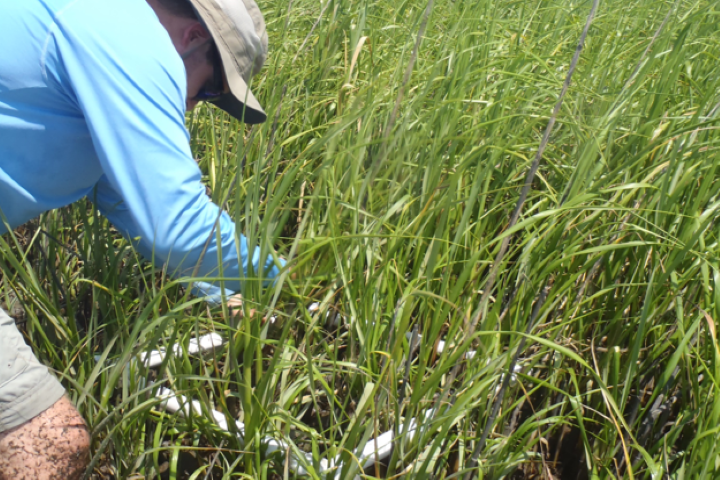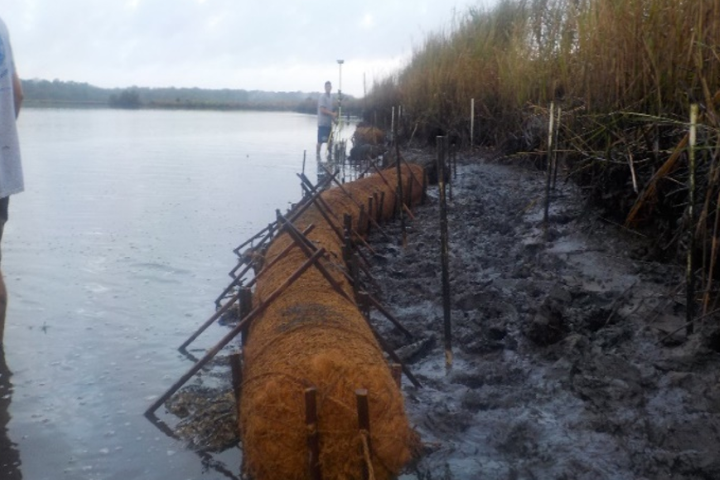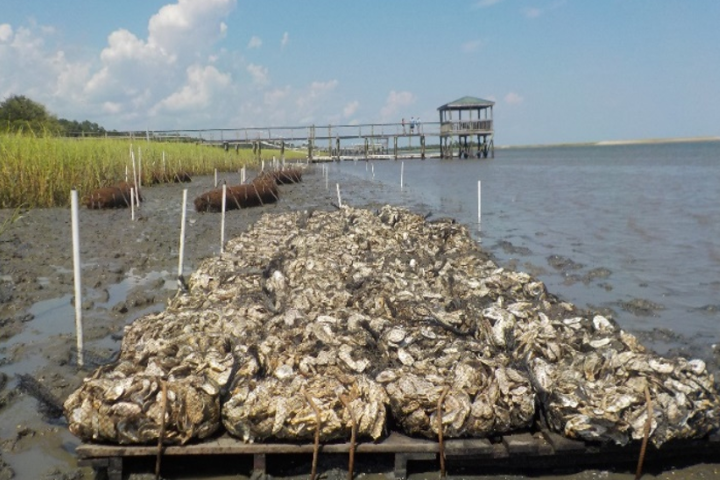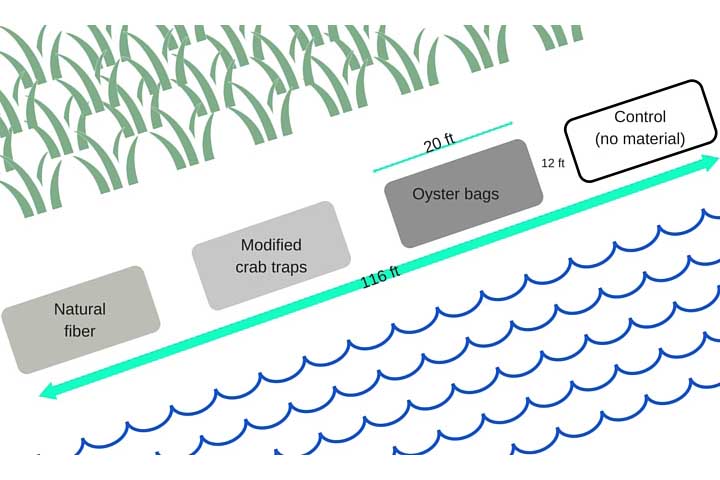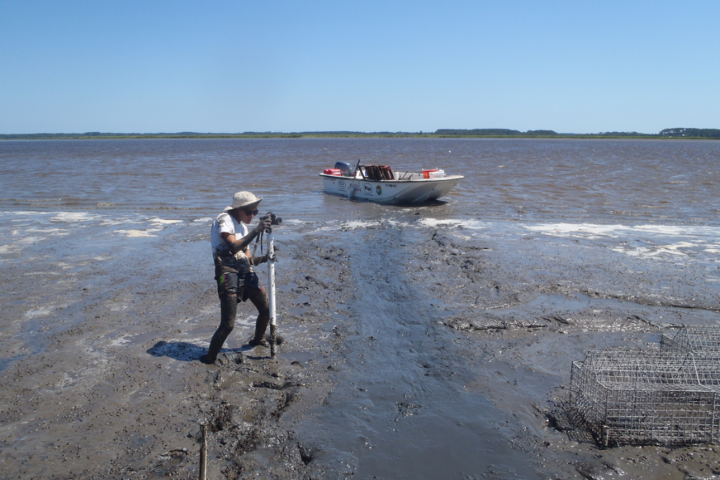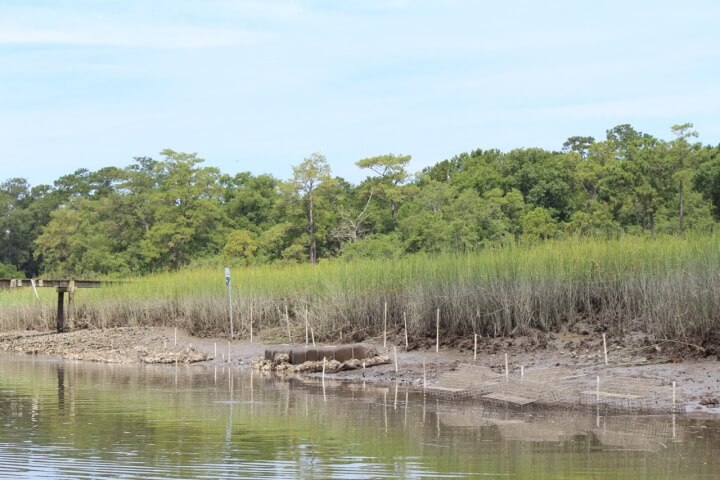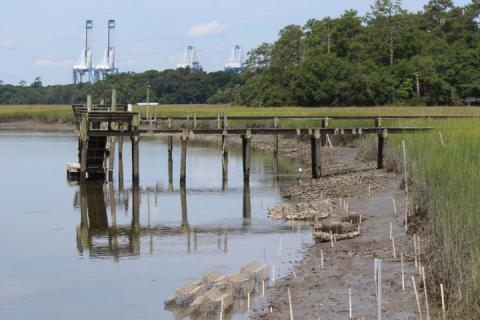
Coastal marsh health and stability are a growing concern for South Carolinians as the coastal zone changes due to sea level rise and increasing development. There are a variety of living shoreline techniques that can be used to stabilize the shoreline, including the use of oyster shells, plantings, logs or rocks to reduce erosion and allow marsh grasses to flourish. As interest in living shoreline options has grown, state agencies began pursuing a regulatory pathway to facilitate permitting on private lands, but realized they needed more information on long term performance of these techniques in South Carolina before developing specific permitting guidance. To address this information need and ensure that new regulations would be based on sound science, two state agencies and two reserves collaborated on an intensive multi-year project to evaluate the effectiveness of a variety of living shoreline technologies under different coastal environmental conditions.
The project analyzed data from existing living shoreline projects, installed and monitored additional experimental living shorelines to test the effectiveness of different treatments, and conducted case studies and interviews with property owners. It produced detailed information about the performance of different living shoreline treatments over time and under a range of conditions. The project team developed a technical report to guide living shoreline regulation, an extensive monitoring dataset, and a decision tree for property owners considering living shorelines. As a result of this work, South Carolina coastal management agencies and stakeholders have greater awareness of the function of living shorelines and access to locally-specific, science-based information about living shoreline performance. This information is expected to enable agencies to streamline the review of living shoreline permit applications and to develop new living shoreline regulatory standards.
